Avianca Lock and Fly is an interesting program feature from Avianca LifeMiles that debuted earlier this year. One of the benefits of learning about foreign transfer partners is that many foreign programs feature low change or cancellation fees. While US-based carriers will charge those without elite status hundreds of dollars to cancel a multi-passenger itinerary, some foreign programs charge nothing at all. Avianca LifeMiles used to feature very reasonable cancellation fees, but they increased those significantly on flights between regions a couple of years ago. Avianca Lock and Fly presumably brings back flexibility at a reasonable price with the ability to essentially put flights on hold, potentially for months at a time — but is it worth it?
What is Avianca Lock and Fly and how does it work?
Avianca LifeMiles is offering the ability to lock in the mileage price of flights operated by Avianca for a fee that varies by region and cabin class. You are essentially putting space on hold for between 3 days and up to as few as 15 days prior to departure. Here are the key things to know:
- You can only lock the mileage fare on flights operated by Avianca (and then only saver-level fares)
- Mileage fares can be locked for a time period ranging from 3 days from placing the lock up until as few as 15 days before departure for domestic flights, 30 days before departure for non-European international flights, and up to 60 days before departure for flights to/from Europe
- Avianca Lock and Fly fees are nonrefundable and are not applied to the completed reservation
- Fees are the same whether one-way or round trip
- Fees are charged per passenger
- Once you have booked a rate with Lock and Fly, reservations cannot be modified in any way including, but not limited to, names, numbers of travelers, dates, and flight numbers. You will only be able to modify the combination of miles and money if you selected the LifeMiles + Money option.
- Locking a flight does not freeze mileage already in your account. If you already have the miles to ticket but you do not want to commit them to the Lock and Fly booking, you can pay for a lock and still use your available miles on other reservations.
The fees vary by route and time. Here are the various fees and hold lengths:
- Domestic economy 3-day hold: $8
- Domestic economy hold until 15 days prior to departure: $20
- Domestic business 3-day hold: $10
- Domestic business hold until 15 days prior to departure: $25
- International economy 3-day hold: $10
- International economy hold until 30 days prior to departure: $45
- International business 3-day hold: $12
- International business hold until 30 days prior to departure: $55
- European economy 3-day hold: $15
- European economy hold until 60 days prior to departure: $80
- European business 3-day hold: $18
- European business hold until 60 days prior to departure: $95
Again, it is worth noting that the fee to put the flight on hold is nonrefundable and is not applied to the final booking — these fees are paid for the ability to put the flight on hold and that is all they apply to.
Examples of Lock and Fly pricing
In practice, I found it pretty simple to find Lock and Fly options when booking far in advance. Avianca’s calendar tool makes it fairly easy to find dates with available flights on Avianca metal. When you look at a month, dates with blue dots definitely have saver-level pricing. Oddly, on this particular search, some of the dates with grey dots also had saver-level options, but on other searches those grey-dot dates did not have saver fares.
At any rate, fare lock only works on saver fares. Avianca calls those “Economy on sale” or “Business on sale”. The center column (which says “Economy” in this picture) is the “anytime” price, which is presumably 15K in the screen shot below because there are still saver seats available — in cases where there are no “Economy on Sale” (saver) seats available, the center column prices higher. The padlock icon indicates that Lock and Fly is available for the indicated flight. Here is an example from Miami to Bogota.
 After you select your flight and enter traveler information, you will get an option to “Lock the mileage shown” or “continue with redemption”.
After you select your flight and enter traveler information, you will get an option to “Lock the mileage shown” or “continue with redemption”.
As this is an international flight (Miami to Bogota, Colombia), it can be held for either 3 days (presumably while you transfer miles or firm up plans with friends or family or get time off approved) or you can put it on hold up until 30 days before departure. As shown above, fees vary with cabin of service. For example, the above itinerary can be locked in economy class for 3 days for $10 or up until 30 days before departure (locked until September 6th for this October 7th departure) for $45.
Fees are higher for a business class redemption. On the same route and flights in business class, you’ll pay $12 in economy class or $55 in business class.
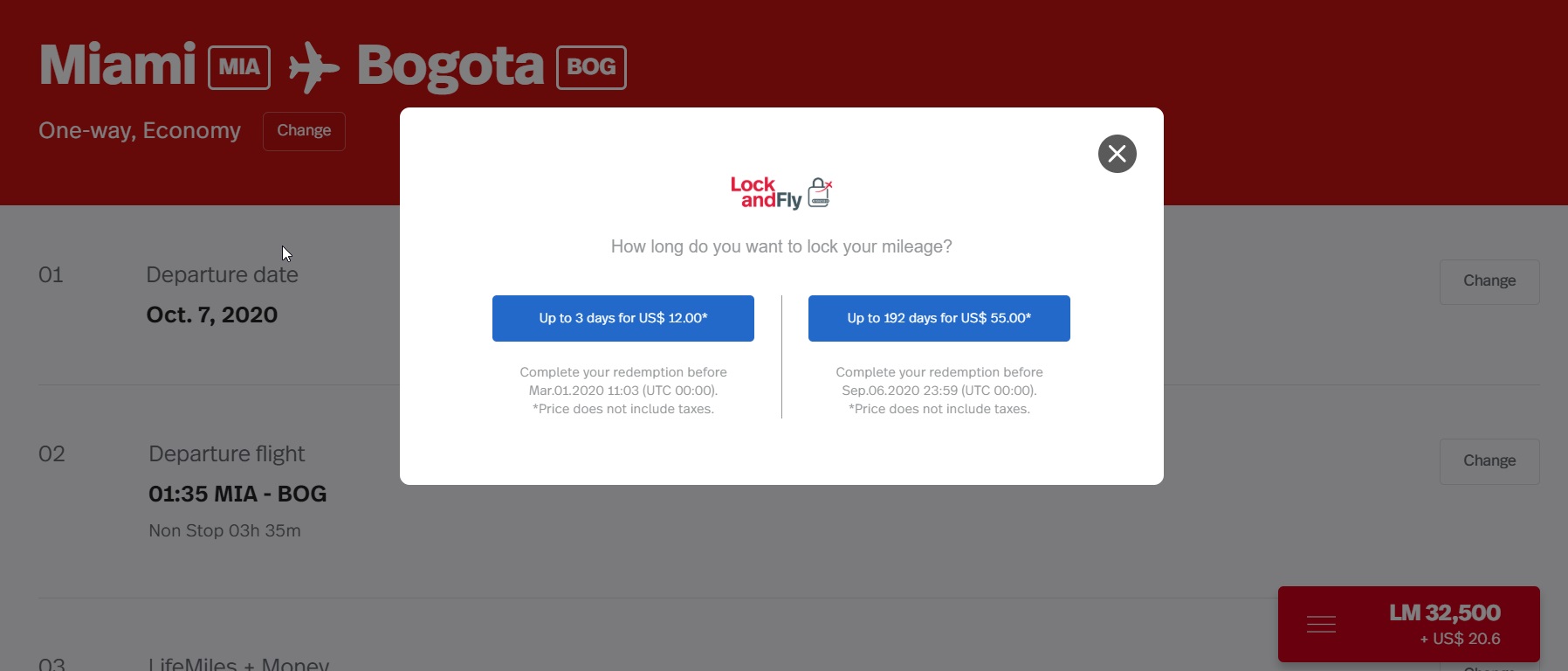
Lock fees should be the same on any international flights that are not to/from Europe. I did a test search to Buenos Aires, Argentina and the lock fees for economy class were identical (I didn’t immediately find availability in business class, but expect it would be the same as above for flights between the US and South America).
Lock and Fly fees to and from Europe can only be held up until 60 days prior to departure, and fees are much higher. For example, I easily found lock and fly available between Bogota and Barcelona for a flight on November 16, 2020.
While the fee to lock for 3 days in economy class only increases to $15, the fee to lock until 60 days prior to departure (August 17, 2020 in this case) is $80.
Business class pumps those fees up to $18 / $95.
Keep in mind that those fees are per passenger, so it can really add up if you’re not traveling alone. Locking up the above itinerary for two passengers in business class up to 60 days before departure would be $190. For a family, this could be an expensive insurance policy.
That’s a steep price to pay just for the security of locking in seats you’re not sure you’ll book. However, given current travel concerns over coronavirus, maybe this gives some folks a way to lock in flights without transferring points and committing them to Avianca yet.
Does Avianca Lock and Fly make sense?
I hadn’t previously realized that Avianca added this feature until a member of our Frequent Miler Insiders recently pointed it out. At the outset, this sounded kind of cool: if you’re short on miles for an award, but you want to lock up the space, you can put the seats on hold while you wait for your next credit card statement to cut or for your welcome bonus to post or for a transfer bonus or for the next Avianca mileage sale to buy some cheap miles to top off your account. That seems potentially pretty appealing.
On the other hand, this struck me as a money trap. You could convince yourself that you’re paying a little more for flexibility, but my reaction to this was that you’re essentially pre-paying a nonrefundable cancellation penalty….without being sure you’re going to cancel. In fact, it reminded me of an expression my legendary high school track coach used each spring on the first day of practice. When gathering a team that had inevitably lost a few state champions to graduation the year before (it was a powerhouse program for years), he’d always start the season by saying, “I’m not going to call this a rebuilding year, because when you call it a rebuilding year you’re making excuses for your losses before they occur.” I wouldn’t want to let Mr. Quinney down and pay a fee for a cancellation before I needed to throw in the towel, would I?
Much to Mr. Quinney’s likely disappointment, I can see some instances where this might make sense. I noted in the section above that current health concerns have many travelers hesitant to commit to plans as we see how things play out. Indeed JetBlue has already announced its plan to capitalize on those fears by dropping change and cancellation fees for tickets booked between today and March 11th in order to encourage people to book by adding flexibility. Avianca Lock and Fly could give you the opportunity to lock in seats now for a trip that is late in the year or early next year without having to transfer points to LifeMiles.
That lack of commitment is really the key to making this potentially worthwhile. While it is true that many programs have reasonable change and cancellation fees, the fact is that you would generally need to be willing to commit to transferring your points to a given airline (whether they be Amex Membership Rewards, Chase Ultimate Rewards, Citi ThankYou points, or Capital One “miles”). If your plans change and you need to cancel, you can not get the flexibility of holding a transferable currency back — you’re stuck with miles in a specific airline program. Some programs have inconvenient expiration policies. For instance, Singapore Krisflyer has very low change and cancellation fees, but miles expire after 36 months whether you use them or not — so if you transfer to Singapore and later cancel your flight, you are on the clock to find a new use for the miles. With Avianca Lock and Fly, you don’t need to make that kind of commitment in order to gain flexibility. That is worth something. Is it worth $95 per passenger? I don’t think so — but neither would I likely be looking at paying 80K miles to cross the Atlantic in Avianca business class. At $55 to lock in availability for a trip to Argentina in business class without having to transfer points until 30 days prior to departure, they may have found the sweet spot for me.
That said, those fees really do start to add up when you’re looking at booking multiple passengers. Since the fees are nonrefundable and do not apply to the final booking, you’re essentially flushing a cancellation fee on a trip that you may not cancel. If you’re looking at a route where availability is tough to find, you may be willing to make that sacrifice. I haven’t closely tracked award availability to South America, but if awards are relatively easy to find, I’d rather wait until plans firm up than pay a couple hundred dollars for a family of 4 to put flights on hold.
Overall, I think this is at least an interesting option. I have made use of free award holds for American Airlines awards and with Air France Flying Blue and Virgin Atlantic over the years, so I can see the appeal of locking up a seat when you find availability so that you can make sure that plans are set. I’d further be willing to pay something for a hold that goes potentially 200 or 300 days out, though whether or not I’d pay Avianca’s price is debatable — but the fact that it is debatable for me means that it might be a deal for you. It’s always good to have another tool in the belt because as any handyman will tell you, you may not need that tool all year long — but the day you do, you’ll be happy you have it.


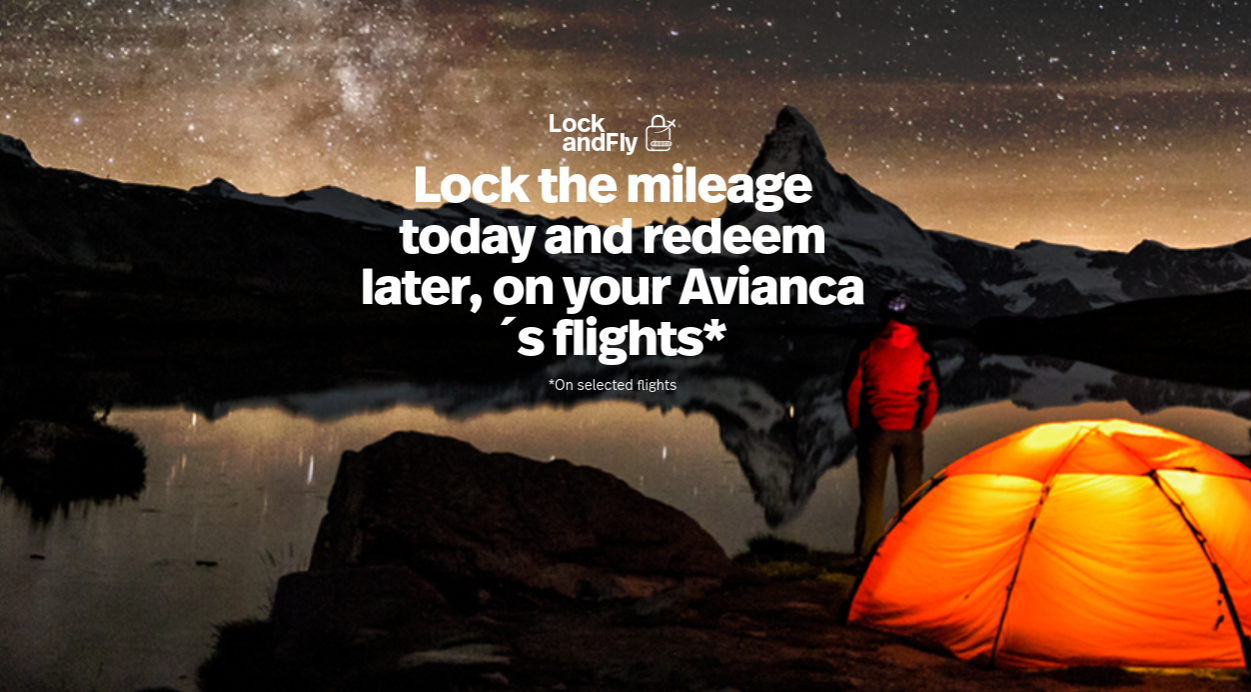

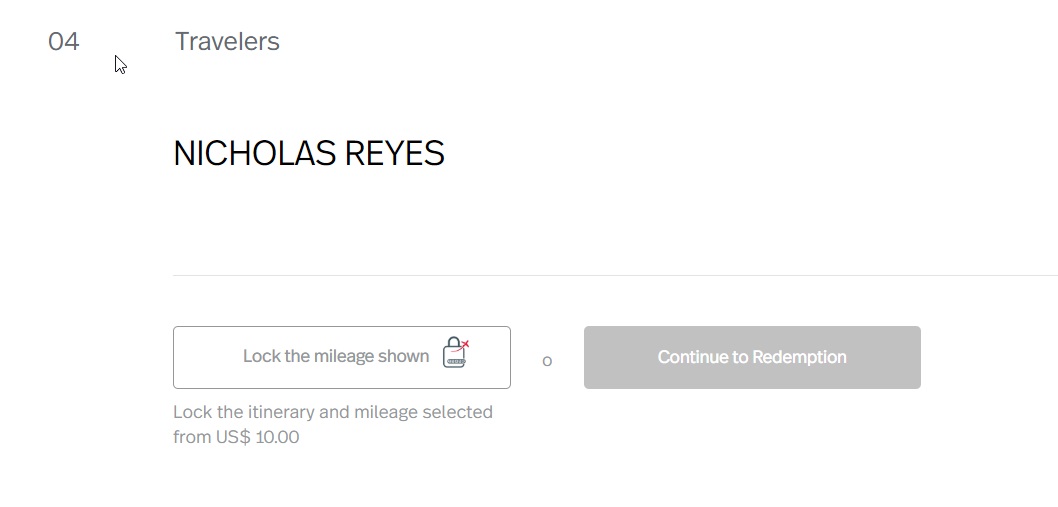


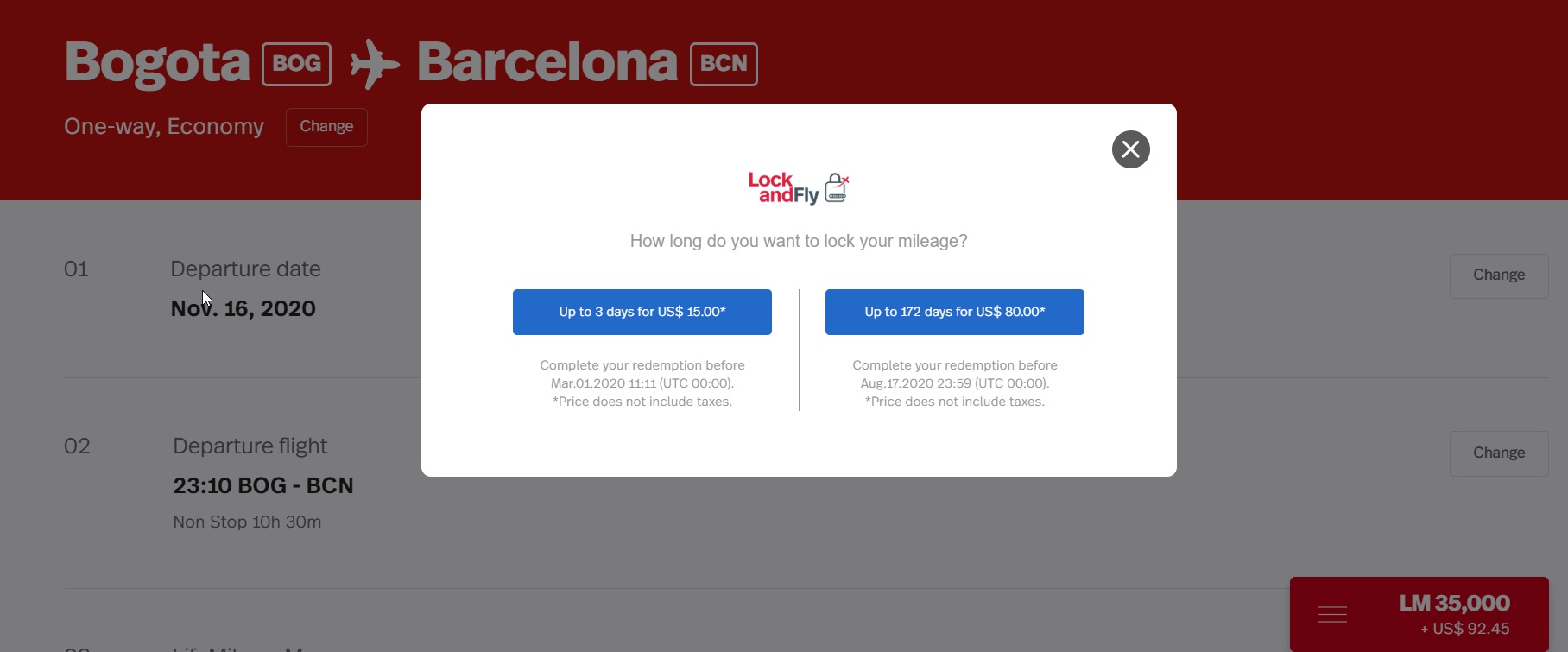
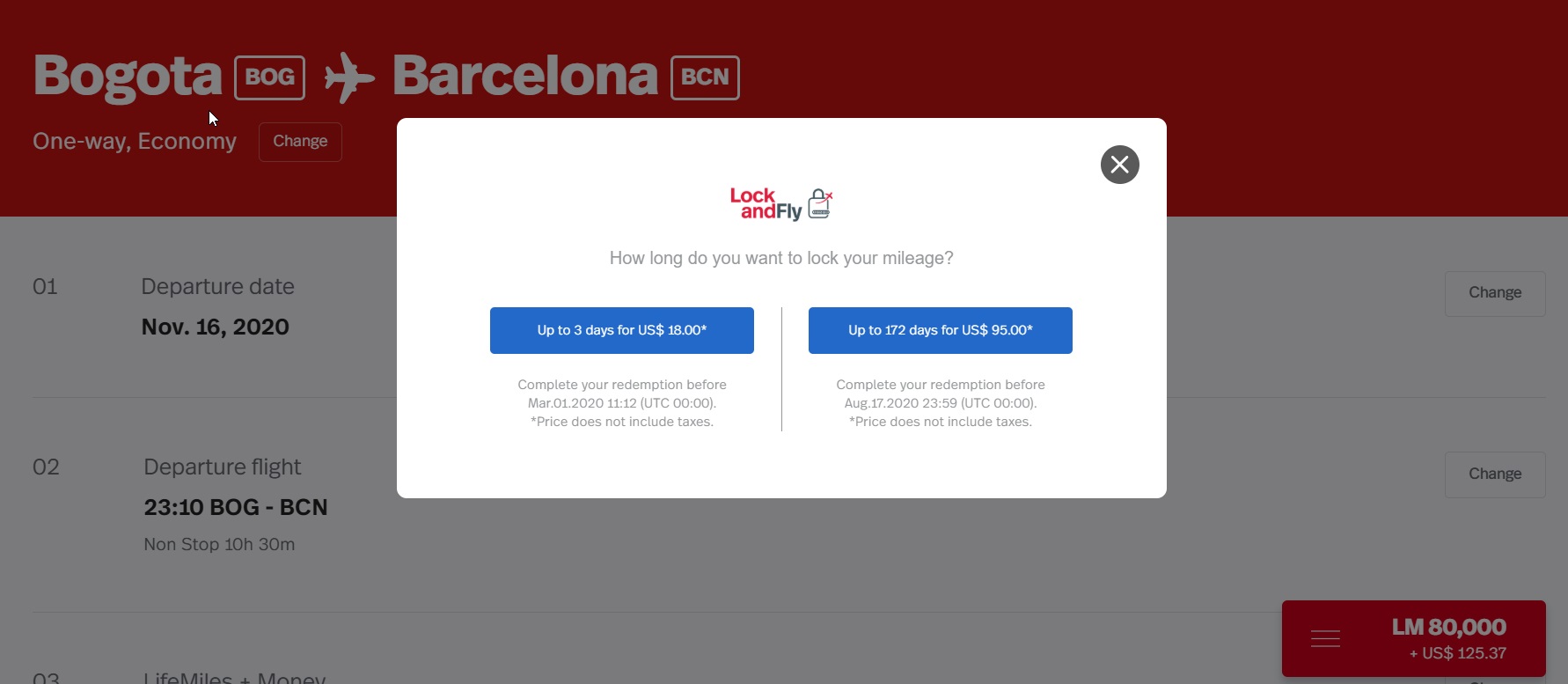
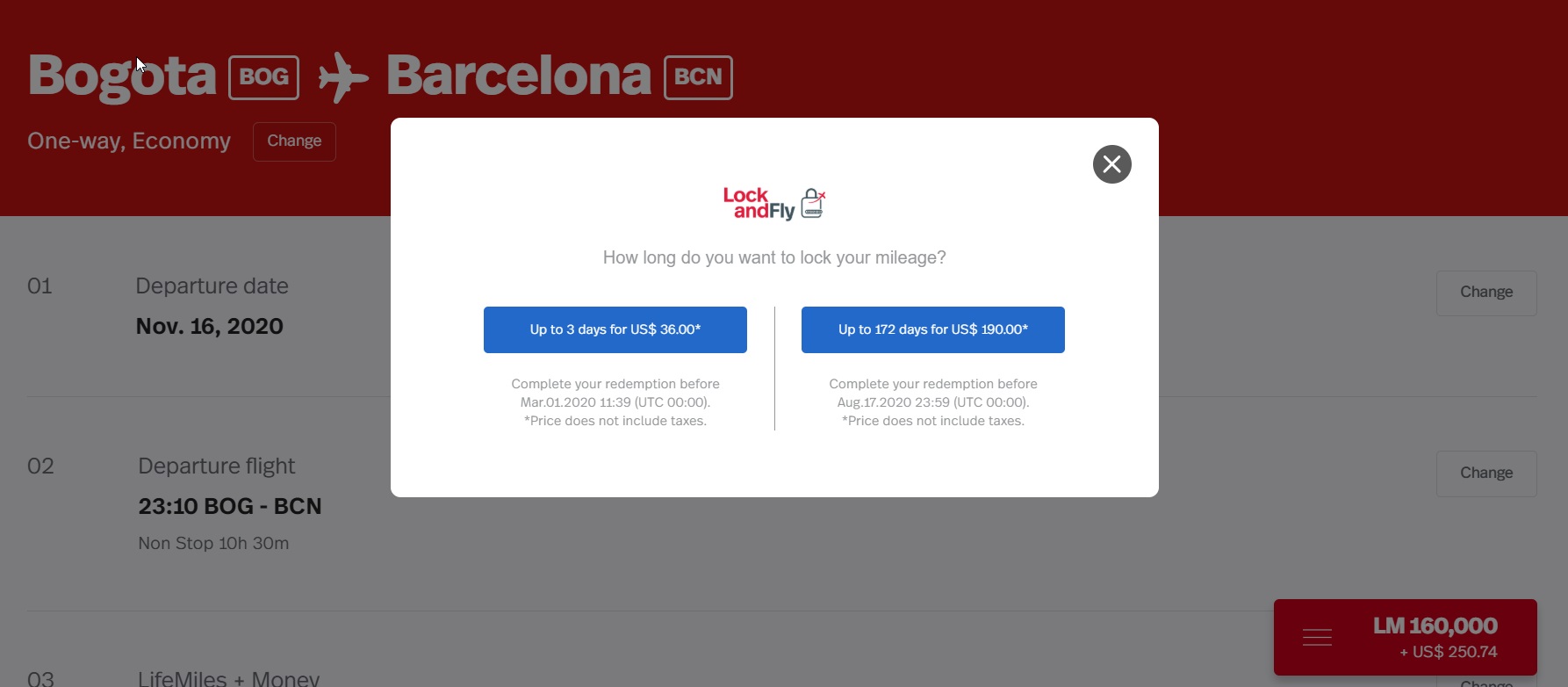
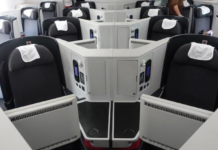


That’s not true I cancel a trip ticket in Colombia due to covid the cost of the tivket was COP $300.000, they gave me a bonus for this value. I tried to use last week, and when I as paying with the bonus was a penalization of COP $120.000 + 50.000, nobody in customer service answer the claims via e-mail.
@ Nick — Of course, when you go to actually book your held flights, you’ll inevitably get an error message and no help from the folks at LifeMiles.